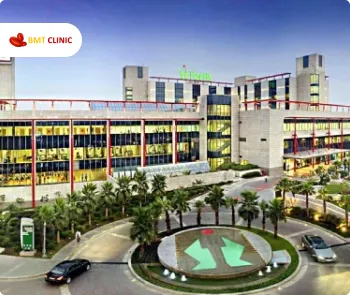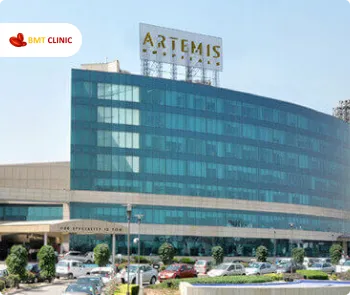Leukemia arises when a single bone marrow cell’s DNA mutates, making it unable to grow and function normally. White blood cells with leukemia frequently exhibit aberrant behaviors. Your type of leukemia, age, general health, and whether the disease has spread to other organs or tissues will all affect your treatment options.
What Is Leukemia?
The term leukemia is derived from the Greek words leukos, which means “white,” and haima, which means “blood.” It is a type of blood cancer represented by the fast proliferation of aberrant blood cells. The bone marrow is the site of production. The majority of leukemia cells are immature white blood cells that are still growing. When imaging tests, like CT or X-rays, are performed, leukemia typically doesn’t produce a visible mass or tumor.
Types of Leukemia
Leukemia is divided into four main types:
- Acute lymphocytic leukemia (ALL) – It is the most prevalent form of leukemia in children, teens, and young adults. It can also affect adults of any age but is more common in those younger than 40 years of age
- Acute myelogenous leukemia (AML) – It is the most prevalent form of acute leukemia in adults. It affects older adults, those over 65 more frequently. It can also affect young people but not frequently.
- Chronic lymphocytic leukemia (CLL) – It is the most prevalent type of adult chronic leukemia, most common in those over 65. With chronic lymphocytic leukemia, symptoms might not show up for years.
- Chronic myelogenous leukemia (CML) – Although it can affect adults of any age, chronic myelogenous leukemia is more common in older adults, with people over 65 being the most affected. Children hardly ever experience it. With CML, symptoms might not show up for a few years.
Cause of Leukemia
Leukemia developed from a single bone marrow cell’s DNA mutation. The “instruction code” that determines a cell’s growth, development, and end of life is found in its DNA. The mutation, also known as a coding error, causes leukemia cells to continue proliferating. The mutated DNA is present in every cell that develops from the initial mutated cell. The reason behind the mutations in these developing cells is not yet known.
Symptoms of Leukemia
The symptoms of leukemia might vary among individuals based on the type of leukemia they suffer. Common symptoms include:
- Weary and persistent fatigued
- Fever or chills
- Frequent infections
- Breathing difficulty
- Pale skin tone
- Unaccounted-for weight loss
- Joint or bone aches or soreness
- A feeling of pain or fullness under your ribs
- Enlarged spleen or liver, swollen lymph nodes in your neck, underarm, groin, or stomach.
- Bleeding and bruising easily, including petechiae, a rash that resembles tiny red spots on the skin, or darkened or purplish patches on the skin
- Bleeding of nose and gum.
How Is My Body Affected By Leukemia?
For several reasons, it is detrimental to have an excess of leukemia cells relative to normal cells.
- Leukemia cells have no use for maintaining body health
- Within the bone marrow, normal blood cells are overtaken by leukemia cells, leaving them with very little room and support to mature and multiply.
- Your blood produces and releases fewer healthy white blood cells, platelets, and red blood cells. Your body’s tissues and organs won’t receive the oxygen they require to function correctly as a consequence.
- Your body won’t be able to produce blood clots or fight infections when they occur.
Leukemia Treatment Cost in India
Leukemia treatment cost in India starts from INR 2,90,00 ($3500). It is comparatively lower than many Western countries, making it an attractive destination for medical tourists seeking high-quality healthcare at affordable prices. India boasts world-class healthcare facilities equipped with state-of-the-art technology and a skilled pool of medical professionals specialized in leukemia treatment. The cost-effectiveness of leukemia treatment in India can be attributed to lower infrastructure expenses, competitive pricing for medications, and a favorable exchange rate. Additionally, India has a robust healthcare infrastructure with several accredited hospitals that adhere to international standards. Patients often choose India not only for the cost advantage but also for the availability of personalized and comprehensive treatment plans.
Diagnosis of Leukemia
Common tests performed for diagnostic purposes are:
- Physical exam – Your symptoms will be reviewed and your healthcare provider will check for enlarged liver or spleen as well as swollen lymph nodes. They might also check for swelling and bleeding in your gums as well as a red, purple, or brown skin rash linked to leukemia
- Complete blood count (CBC) – This test checks your platelets, white blood cells, and red blood cell counts to determine whether they are abnormal. White blood cell counts will probably be higher than normal if you have leukemia.
- Blood cell examination – Additional tests such as peripheral blood smear or flow cytometry will be performed to look for markers that point to the presence of leukemia cells or a particular kind of leukemia
- Imaging tests – Imaging tests such as X-rays, MRI, and CT scans will be performed to see if leukemia has affected your different body parts
- Bone marrow aspiration – It is also known as bone marrow biopsy. It confirms a diagnosis of leukemia by estimating the proportion of aberrant cells in your bone marrow
- Lumbar puncture (spinal tap)– This is performed to determine whether leukemia has spread to the spinal fluid surrounding your brain and spinal cord or not.
Risks For Developing Leukemia
Leukemia can be developed by anyone. However, certain risks might increase your chances of development such as:
- Having prior cancer therapy such as radiation or chemotherapy as part of your previous cancer treatment.
- Certain genetic disorders can raise your risk, including Down syndrome, Klinefelter syndrome, neurofibromatosis, and Schwachman-Diamond syndrome.
- Family history of leukemia
- Smoking or being around a cloud of secondhand smoke.
- Being exposed to chemicals used in industry such as formaldehyde and benzene, commonly used carcinogens.
Treatment of Leukemia
The specific treatments of leukemia for an individual depend on the type of leukemia, their age, and overall health. Common treatment approaches are:
- Chemotherapy – It is the most popular kind of treatment for leukemia. Medicines are used in this procedure to either destroy or prevent leukemia cells from proliferating. You could get the chemicals (medication) as a pill, an injection under your skin, or an injection into a vein during treatment. You will typically be given a mix of chemotherapy medications.
- Immunotherapy – This treatment works by boosting your body’s immune system with specific medications. Through immunotherapy, your immune system can recognize cancer cells and generate more immune cells to combat them.
- Radiotherapy – Strong energy beams or X-rays are used in this treatment to either kill or stop the growth of leukemia cells. During treatment, a machine either distributes radiation throughout your entire body or precisely targets the areas of your body that contain cancer cells. Also, radiation may be administered to your entire body before a hematopoietic cell transplant
- Targeted therapy – Drugs intended to target particular leukemia cell components such as a protein or gene, that are causing the disease to overtake healthy blood cells are used in this treatment. Targeted treatments have the potential to stop leukemia cells from proliferating, stop their blood supply, or even kill them. Normal cells are less likely to be harmed by targeted therapy.
- Stem cell transplant – With this treatment, new, healthy hematopoietic cells are used to replace the cancerous blood-forming cells that were destroyed by radiation therapy and/or chemotherapy. Before receiving chemotherapy and radiation, your doctor may remove these healthy cells from your bone marrow or blood, or they may come from a donor. Your body needs red blood cells, white blood cells, and platelets, which are produced when the healthy new cells divide and form new bone marrow and blood cells
- Chimeric antigen receptor (CAR) T-cell therapy – This is a novel kind of therapy wherein your body’s immune cells, known as T-cells or T-lymphocytes, which fight infections, are engineered to fight leukemia cells and are then infused back into your body.
Treatment Phases of Leukemia
You might receive phased treatment for leukemia or ongoing, long-term treatment depending on your treatment plan. Three parts are usually involved in phased treatment. There is a different objectives for every phase.
- Induction therapy – To attain remission, the objective is to eradicate as many leukemia cells from your bone marrow and blood as you can. When the disease is in remission, all indications and symptoms vanish, blood cell counts go back to normal, and there are no leukemia cells in your blood. A typical course of induction therapy is four to six weeks.
- Consolidation therapy – To prevent the cancer from returning, the aim is to eradicate any leukemia cells that may still be hidden. Consolidation treatment is often given to you in cycles over four to six months.
- Maintenance therapy – Killing any leukemia cells that might have survived the first two stages of treatment and preventing the cancer from coming back are the two main objectives. The treatment will last for about two years.
How Can BMT Clinic Help In Your Treatment Search?
BMT is an esteemed organization for patients seeking physicians, medical facilities, and specialized care. We’ll identify the best medical options for you. Our staff will provide you with a list of licensed, respectable, and trustworthy physicians and hospitals based on your medical issues. We also provide a treatment plan that is affordable for you. In addition, we help patients with a variety of other matters, such as obtaining medical visas and travel authorization.














